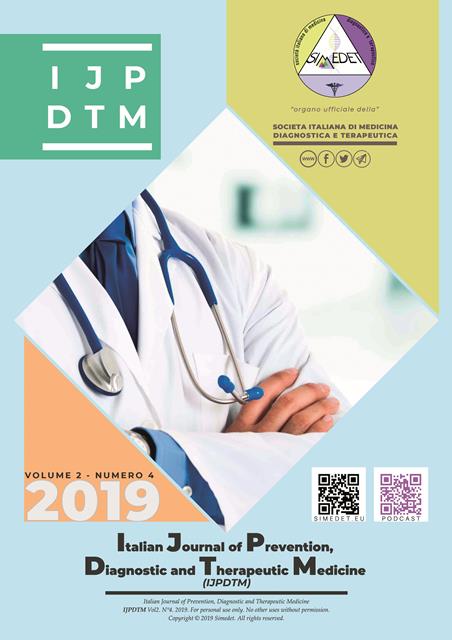Gestione del trauma toracico chiuso in emergenza
Contenuto principale dell'articolo
Abstract
I traumi toracici chiusi sono frequenti e spesso gravi, in particolare in caso di associazione lesionale (cranio, addome). Possono portare a un'insufficienza respiratoria acuta. La ricerca e il trattamento di un pneumotorace (che può essere iperteso) sono due degli obiettivi principali cosi come il trattamento analgesico. La gestione in emergenza è orientata dal meccanismo del trauma, da un esame obiettivo minuzioso e dall'analisi completa delle immagini radiologiche. Determinare il trattamento ottimale per i pazienti con trauma toracico rimane tuttora una sfida. Gli avanzamenti tecnologici, ed in particolare l’evoluzione delle tecniche di imaging, hanno permesso una diagnosi sempre più precoce di lesioni potenzialmente fatali. Ad esempio l’impiego dell’ ecografia sia sul territorio sia all’arrivo del paziente in Pronto Soccorso nella valutazione di un paziente traumatizzato è in continua espansione, tuttavia rimangono ancora poco chiare le precise indicazioni all’uso e il significato clinico del riscontro di alcuni reperti.
Diventa fondamentale sin dal territorio eseguire una procedura standardizzata per la gestione del paziente traumatizzato che permetta di riconoscere e trattare immediatamente le patologie più severe per raggiungere la stabilizzazione emodinamica del paziente che successivamente verrà trattato in maniera definitiva.
Downloads
Dettagli dell'articolo

Questo lavoro è fornito con la licenza Creative Commons Attribuzione - Non commerciale - Non opere derivate 4.0 Internazionale.
Riferimenti bibliografici
Weir S, Salkever DS, Rivara FP, Jurkovich GJ, Nathens AB, Mackenzie EJ, et al. One-year treatment costs of trauma care in the USA. Expert Rev Pharmacoecon Outcomes Res. 2010;10:187–97.
Sirmali M, Türüt H, Topçu S, Gülhan E, Yazici Ü, Kaya S,Tafltepe I. A comprehensive analysis of traumatic rib fractures:morbidity, mortality and management. European Journal ofCardio-thoracic Surgery 2003;24:133-138.
Bauman Baumann MH, Strange C, Heffner JE, et al. Management of spontaneous pneumothorax: an American College of Chest Physicians Delphi consensus statement. Chest 2001;119:590–602.
Myers JB, Slovis CM, Eckstein M, Goodloe JM, Isaacs SM, Loflin JR, et al. Evidence-based performance measures for emergency medical services systems: A model for expanded EMS benchmarking. Prehosp Emerg Care. 2008;12:141–51
Sutyak JP, Wohltmann CD, Larson J. Pulmonary contusions and critical care management in thoracic trauma. Thorac Surg Clin 2007;17(1):11-23.
Teuben M, Löhr N, Jensen KO, et Al. Improved pre-hospital care efficiency due to the implementation of pre-hospital trauma life support (PHTLS®) algorithms. Eur J Trauma Emerg Surg. 2019 May 11. doi: 10.1007/s00068-019-01141-1.
Massen H, Mercat C. Intérêt des explorations par les ultrasonsdans les véhicules de transport primaires d’urgence des malades oublessés. Rev SAMU 1983;7:321-4.
Ketelaars R, Hoogerwerf N, Scheffer GJ. Prehospital chest ultrasound by a Dutch helicopter emergency medical service. J Emerg Med. 2013;44:811–7.
Yates JG, Baylous D. Aeromedical ultrasound: The evaluation of point-of-care ultrasound during helicopter transport. Air Med J. 2017;36:110–5.
S Di Bartolomeo, G Sanson, G Nardi, et Al.A population-based study on pneumothorax in severely traumatized patients. Journal of Trauma and Acute Care Surgery 51 (4), 677-682.
Leblanc D, Bouvet C, Degiovanni F et Al. Early lung ultrasonography predicts the occurrence of acute respiratory distress syndrome in blunt trauma patients. Intensive Care Med. 2014;40(10):1468-74.
Wanek S, Mayberry JC. Blunt thoracic trauma: Flail chest, pulmonary contusion, and blast injury. Crit Care Clin 2004;20(1):71-81.
Pneumomediastinum Diagnosed on Ultrasound in the Emergency Department: A Case Report. Beason H, Markowitz J, et all. Perm J, 2015
Practice Management Guidelines for Management of Hemothorax and Occult Pneumothorax Nathan T. Mowery, MD, Oliver L. Gunter, MD, Bryan R. Collier, DO, Jose’ J. Diaz, Jr., MD, Elliott Haut, MD, Amy Hildreth, MD, Michelle Holevar, MD, John Mayberry, MD, and Erik Streib, MD
Teuben M, Löhr N, Jensen KO, et al. Improved pre-hospital care efficiency due to the implementation of pre-hospital trauma life support (PHTLS®) algorithms. Eur J Trauma Emerg Surg. 2019 May 11. doi: 10.1007/s00068-019-01141-1.
Dennis M and Duddy R. The lung and chest wall diseases. In: Murray Jand Nadel J (ed). Textbook of Respiratory Medicine, 3rd ed., WB SaundersCo, 2000; 2: 2044-55.

